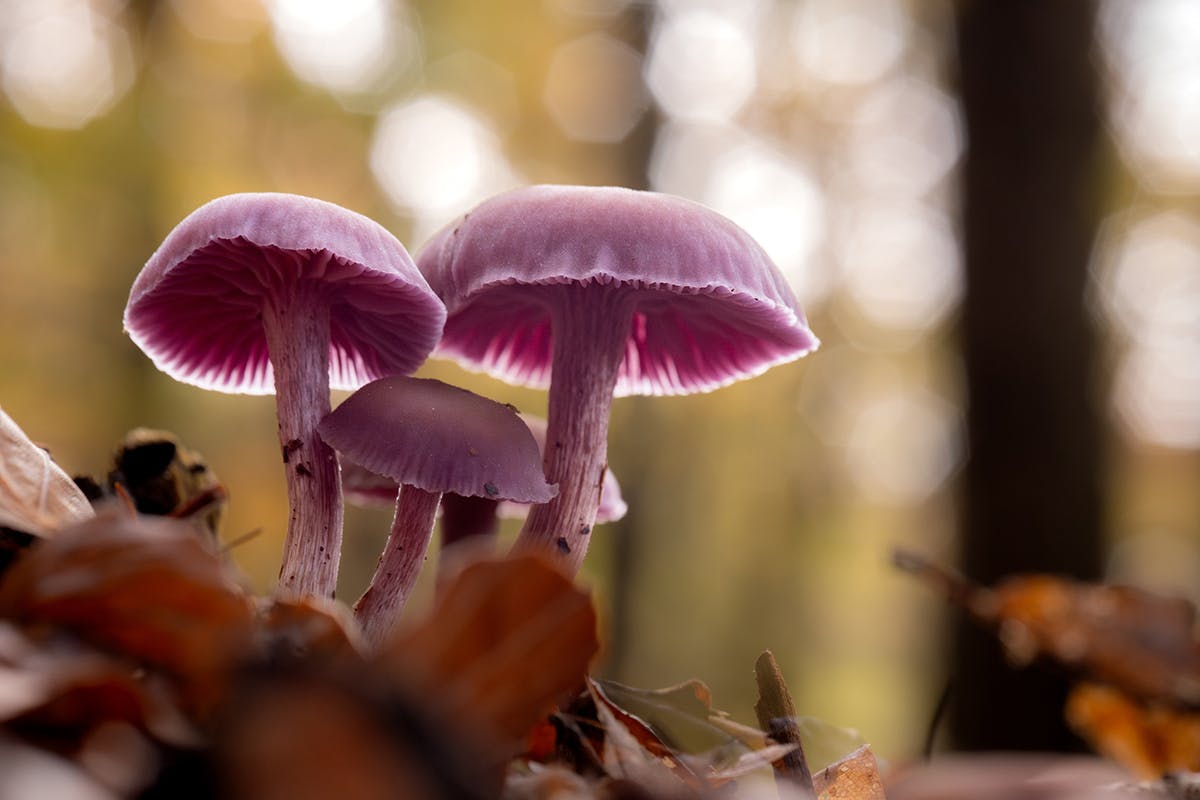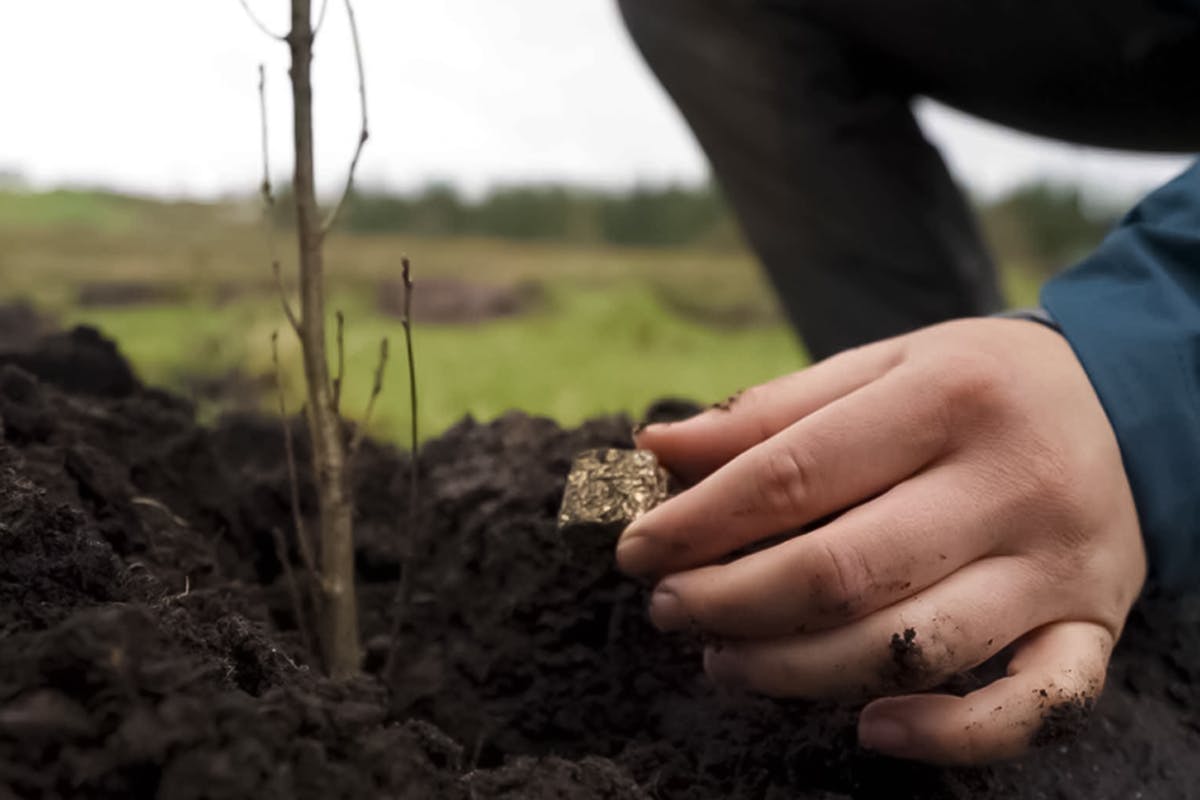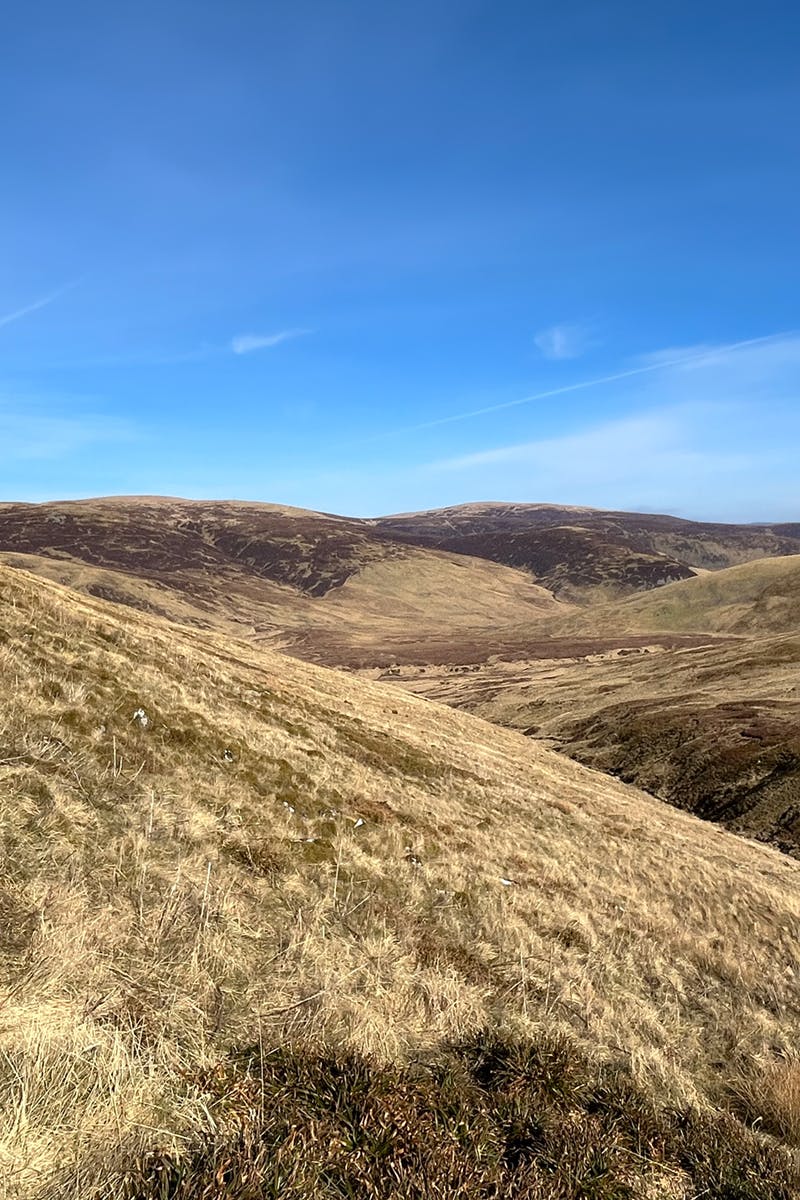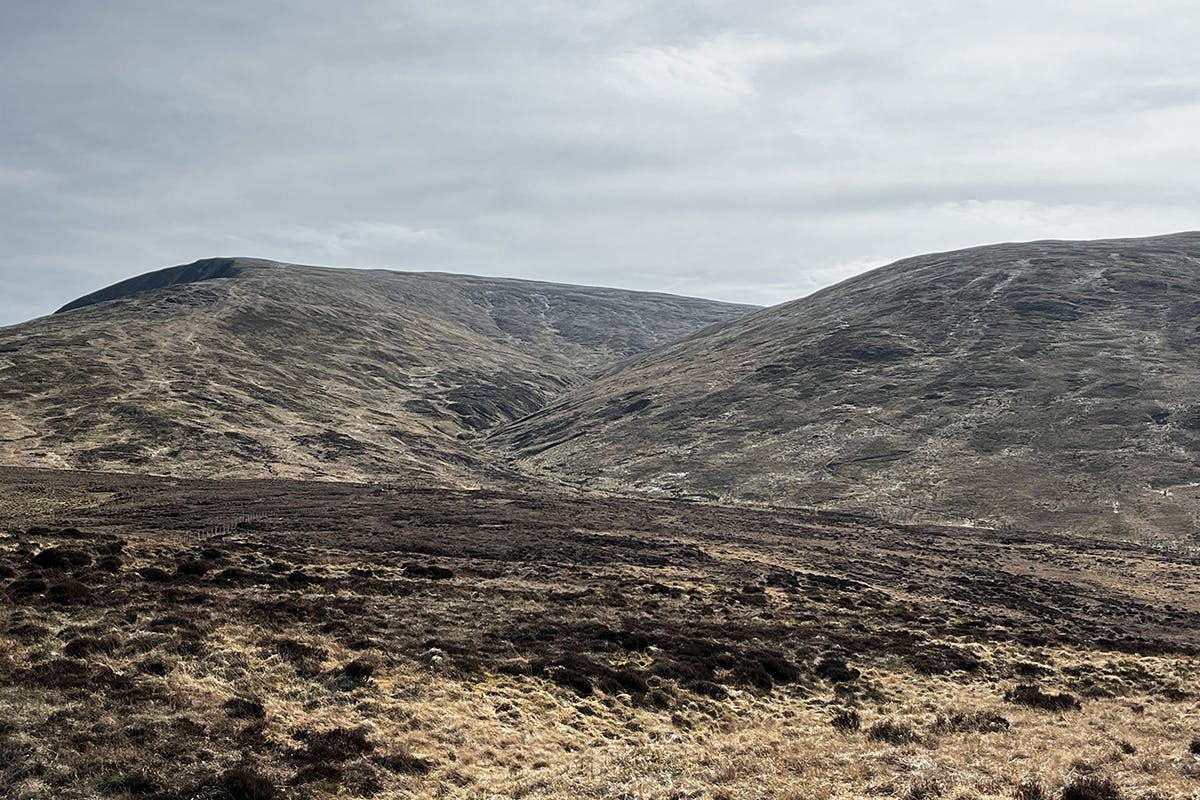- Management Plan
- Total budget: £16,391
- Status: Post-Implementation Monitoring
Mycorrhizal fungi began forming symbiotic associations with plants around 460 million years ago. When plants spread out of the ocean, a mutually beneficial relationship evolved where fungi and plants traded key elements like water, nutrients and carbon to survive and grow. Today, there’s emerging evidence that this ancient partnership could be crucial in accelerating the revival of our woodlands and forests. Some research shows significant increases in tree growth and survival when inoculated with their mycorrhizae partners. Teaming up with the Borders Forest Trust and Rhizocore Technologies, we’re testing this method on mountain birch in the southern uplands of Scotland. We’ll be checking whether mycorrhizal inoculation boosts tree survival in these upland habitats with a paired block trial at three different altitudes.
Project Timeline
Annually late summer 2025-2026
Growth and survival surveys.
April to May 2025
Tree planting and inoculation.
Stimulating tree growth and survival
Most trees can form symbiotic associations with ectomycorrhizal fungi (symbiotic colonisers of woody roots). Like hidden allies beneath the surface, mycorrhizal fungi and trees work together sharing resources to help each other survive and thrive. Mycorrhizal fungi hosted in the tree’s roots stretch out their delicate, thread-like structures (hyphae) deep into the soil in search of water and nutrients like nitrogen and phosphorus. The fungi are rewarded with a steady supply of sugars and carbohydrates from the trees, which are produced through photosynthesis. This beneficial partnership is known to improve resistance to drought and soil disease whilst optimising growth and a self-sustaining nutrient system.
Where woodland has been long gone from the landscape, similarly, mycorrhizae may be lacking in the soil. This is likely to be the case around the hills and valleys of Talla and Gameshope—the site of this project—where at higher exposed elevations, young trees are more susceptible to stress. Because of these challenging conditions for growth and establishment, we’re really intrigued to find out whether mycorrhizal fungi inoculations can help boost growth and reduce mortality rates.

Ectomycorrhizal fungi super stats
- 100,000x more efficient at absorbing nutrients than roots alone
- 20-50% increased growth rates with optimal fungal strains
- up to 100% seedling survival when connected to fungi
- ~20% of tree carbon stored permanently by fungi

The Rhizopellet
Rhizocore Technologies is developing a practical solution to fix broken associations between plants and fungi for use in different woodland restoration contexts. The Rhizopellet, a coin-sized pellet containing fully developed live fungi encased in substrate, is introduced into the soil with tree saplings. Using locally sourced fungi suited to each planting site, the Rhizopellet enhances the trees' development of stronger roots, hence the chances of a healthier start to life.
Data collected from field trials using the Rhizopellet show improved sapling survival and growth rates: 21% - 82% survival improvement and up to 600% growth improvement (against fertiliser controls) after one year in the field.
The type of mycorrhizal fungi used for this project is ectomycorrhizal (ECM) fungi that grows in woodlands and associates with tree species such as oak, birch, pine, beech and lime. The ectomycorrhizal fungi is propagated by Rhizocore in a lab and the pellet is added into the planting hole next to the tree roots at the time of planting.

Project Goals
The objectives of this project are twofold:
- Establish mountain birch woodland at Talla and Gameshope
- Determine if mycorrhizal inoculation aids survival and establishment of mountain birch trees in a trial.
This is the first effort to restore mountain birch at Talla and Gameshope. On 7 ha of their 1,832 ha upland site (above 500 m), the Borders Forest Trust will plant around 3,135 mountain birch trees - a high altitude adaptation of downy birch.
Low altitude downy birch typically doesn’t survive well when planted at altitude but we want to test whether the mycorrhizal fungi will give them a survival boost in these harsh upland environments. As part of the trial, 150 local provenance lower altitude downy birch trees will be planted, of which half will be inoculated with mycorrhizal fungi and half will be left as a control.

The Trial
The design of the trial falls under the expertise of Rhizocore Technologies, who will produce Rhizopellets to treat 2,000 trees. The indication of success is based on comparing survival rates between trees treated with the Rhizopellet and trees that were not treated. There will be detailed assessments of tree growth and health for 780 of the trees to provide sufficient data without being too time consuming.
Site variables
In woodland environments like those found at the trial site, there’s potential for external factors to come into play and affect how our trees grow. The intricate mix of various soil types, moisture and exposure could all influence tree development. As such, the trial design needs to carefully consider and reduce site variables that would make the impact of mycorrhizae harder to detect and measure.
Paired blocks
With this in mind, we will use a paired block trial where 35 trees treated with mycorrhizal fungi are paired with an adjacent group of 35 untreated trees to ensure the ground conditions are as similar as possible between the two groups and aren’t biasing the results. There will be 9 plots in total, with 3 replicates at each altitude of 550m, 600m and 650m. In addition to these plots of mountain birch, there will be 3 paired plots of low altitude birch, this time with 25 trees treated with mycorrhizal fungi and 25 untreated trees in each plot. This gives us a total of 780 trees which will have full growth, health and survival metrics measured annually for two years and the remaining trees planted across the wider site will only have survival rates recorded.

Monitoring
We will join the Borders Forest Trust and Rhizocore to conduct tree monitoring surveys to check on the growth and survival of trees in the project’s first two years. Following that, the Borders Forest Trust plans to carry on monitoring for at least 5 years, gathering information on the young trees’ progress.

Knowledge Sharing
The movement to bring back Scotland’s native montane woodlands is growing in awareness and action. Through exploratory initiatives like this, we can contribute knowledge and experience that could support the effort to restore mountain birch across Scotland. Results and data gathered from this trial will be shared with groups such as the Mountain Birch Working Group and other native woodland enthusiasts. Findings from the trial will help Rhizocore identify the effects of inoculation in the restoration of mountain birch woodland, adding to the growing knowledge base on mycorrhizal fungi associations and their application as an effective and scalable restoration method for woodlands and forests.
Thanks to all our Mossy Earth members for making this project possible! We’re supporting £14,986 of the £16,390 project budget total, This covers the labour and materials needed to produce and plant the trees along with the mycorrhizal fungi pellets.

For more context on this project
The Missing Montane Link
Nestled in the Wild Heart of Southern Scotland, Talla and Gameshope is one of Borders Forest Trust’s flagship landscape restoration projects. In the past, thriving native woodlands would have carpeted the valley bottoms while mountain birch woodlands and rich montane shrubland and heathlands would have occupied the higher ground. Its hills and valleys, which bear a resemblance to dramatic Highlands glens, are now stripped back of these natural habitats and the biodiversity they support. Centuries of unsustainable land management from deforestation, sheep farming, muirburn and deer management have left their mark on the landscape.
Since 2013, the lower slopes of the site have been planted with a rich mix of broadleaved trees, while higher up, hardy montane scrub species—including mountain willows, dwarf birch, and juniper—are taking root. But one key piece of the puzzle is still missing: mountain birch. This vital tree species will help bridge the gap between the lowland woods and the high-altitude scrub, creating a continuous, thriving woodland habitat.
Across Scotland’s Southern Uplands, native trees and montane scrub have been reduced to just a few isolated individuals—survivors clinging to steep cliffs and inaccessible slopes, safe from grazing sheep and deer. With so few seed trees left, natural regeneration is almost impossible. That’s why active planting is essential. By reintroducing a diverse range of tree and shrub species, we’re laying the groundwork for a self-sustaining forest that will flourish for generations to come.
Without this project, mountain birch—so crucial to a healthy upland ecosystem—would remain absent from this landscape. Now, thanks to careful management and protection from browsing animals, these trees will finally have the chance to grow, restoring a lost part of Scotland’s natural heritage.

the team behind the project

Ellie Jackson-Smith, Restoration Ecologist, Mossy Earth

Nicola Hunt, Head of Land Management, Borders Forest Trust

Andy Wilson, Wild Heart Site Officer, Borders Forest Trust

Franziska Scott, European Business Development, Rhizocore Technologies

Ewa Guzniczak, Head of Bioprocessing, Rhizocore Technologies

Petra Guy, Plant Data Scientist, Rhizocore Technologies

Toby Parkers, Founder & CEO, Rhizocore Technologies
Sources & further reading

- “Forest tree growth is linked to mycorrhizal fungal composition and function across Europe” - M.A. Anthony et al. (2022)
- “Growth stimulation of young oak plantations inoculated with the ectomycorrhizal fungus Paxillus involutus with special reference to summer drought” - Jean Garbaye & Jean-Louis Churin (1997)